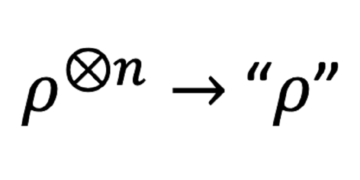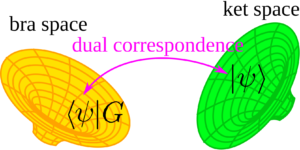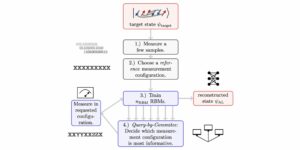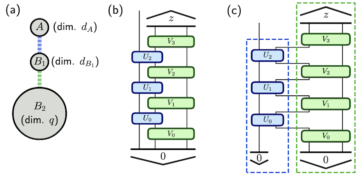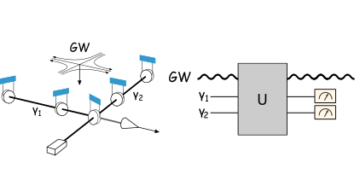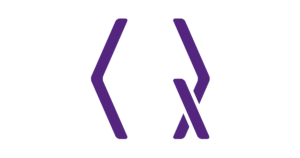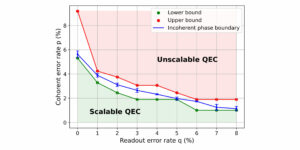1Department of Electrical Engineering, Stanford University, Stanford, CA 94305 USA
2E. L. Ginzton Laboratory and the Department of Applied Physics, Stanford University, Stanford, CA 94305 USA
Find this paper interesting or want to discuss? Scite or leave a comment on SciRate.
Abstract
Superconducting quantum circuits are a promising hardware platform for realizing a fault-tolerant quantum computer. Accelerating progress in this field of research demands general approaches and computational tools to analyze and design more complex superconducting circuits. We develop a framework to systematically construct a superconducting quantum circuit’s quantized Hamiltonian from its physical description. As is often the case with quantum descriptions of multicoordinate systems, the complexity rises rapidly with the number of variables. Therefore, we introduce a set of coordinate transformations with which we can find bases to diagonalize the Hamiltonian efficiently. Furthermore, we broaden our framework’s scope to calculate the circuit’s key properties required for optimizing and discovering novel qubits. We implement the methods described in this work in an open-source Python package $tt{SQcircuit}$. In this manuscript, we introduce the reader to the $tt{SQcircuit}$ environment and functionality. We show through a series of examples how to analyze a number of interesting quantum circuits and obtain features such as the spectrum, coherence times, transition matrix elements, coupling operators, and the phase coordinate representation of eigenfunctions.
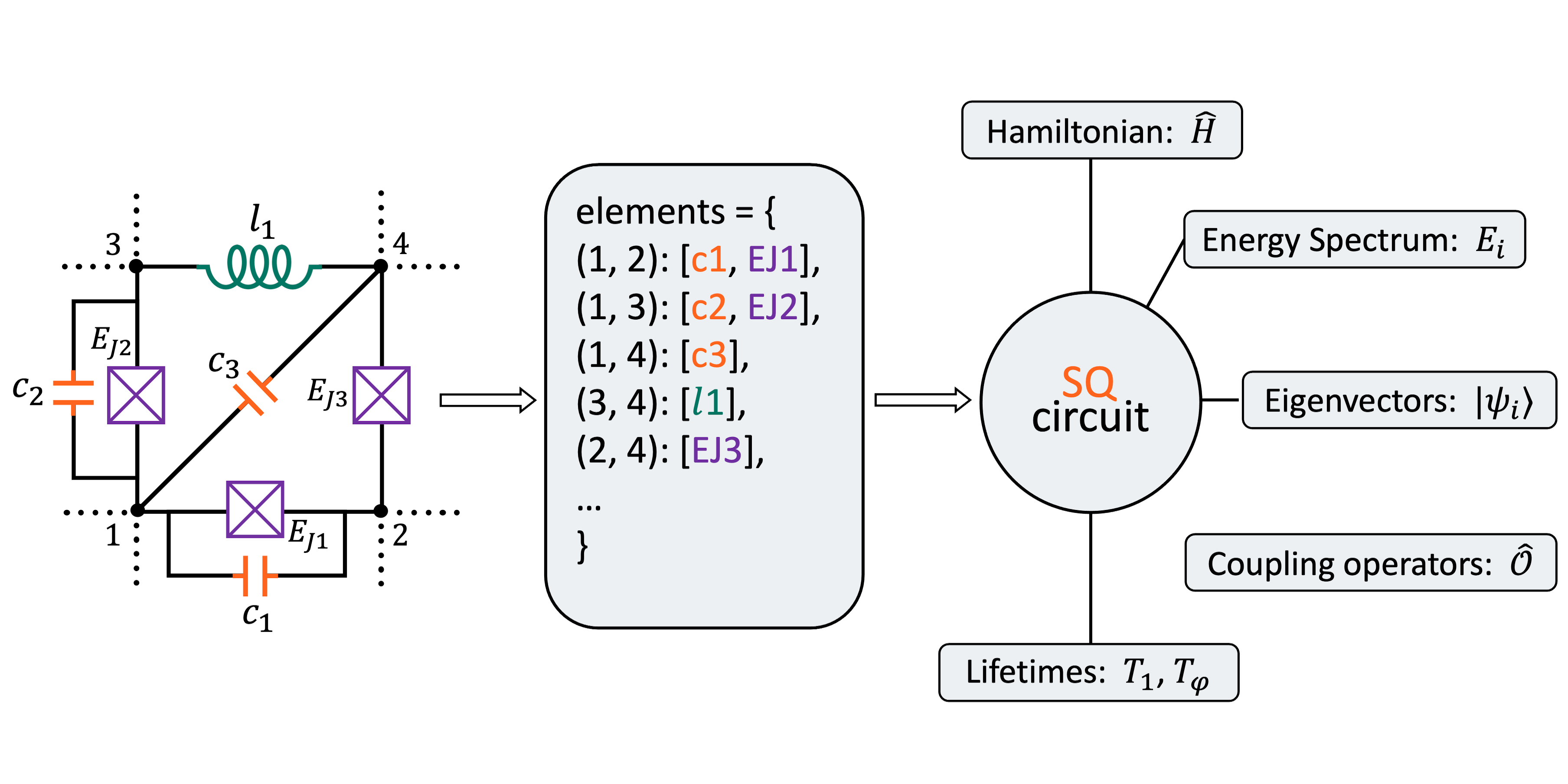
► BibTeX data
► References
[1] 4 A. Gyenis, A. D. Paolo, J. Koch, A. Blais, A. A. Houck, and D. I. Schuster, “Moving beyond the transmon: Noise-protected superconducting quantum circuits,” 6 2021. [Online]. Available: https://doi.org/10.1103/PRXQuantum.2.030101 0pt.
https://doi.org/10.1103/PRXQuantum.2.030101
[2] 4 P. Krantz, M. Kjaergaard, F. Yan, T. P. Orlando, S. Gustavsson, and W. D. Oliver, “A quantum engineer’s guide to superconducting qubits,” Appl. Phys. Rev, vol. 6, p. 21318, 6 2019. [Online]. Available: https://doi.org/10.1063/1.5089550 0pt.
https://doi.org/10.1063/1.5089550
[3] 4 Z. Wang, T. Rajabzadeh, N. Lee, and A. H. Safavi-Naeini, “Automated discovery of autonomous quantum error correction schemes,” PRX Quantum, vol. 3, no. 2, p. 020302, 2022. [Online]. Available: https://doi.org/10.1103/PRXQuantum.3.020302 0pt.
https://doi.org/10.1103/PRXQuantum.3.020302
[4] 4 T. Rajabzadeh, C. J. Sarabalis, O. Atalar, and A. H. Safavi-Naeini, “Photonics-to-free-space interface in lithium niobate-on-sapphire,” pp. STu4J–6, 2020. [Online]. Available: https://doi.org/10.1364/CLEO_SI.2020.STu4J.6 0pt.
https://doi.org/10.1364/CLEO_SI.2020.STu4J.6
[5] 4 N. R. Lee, Y. Guo, A. Y. Cleland, E. A. Wollack, R. G. Gruenke, T. Makihara, Z. Wang, T. Rajabzadeh, W. Jiang, F. M. Mayor et al., “Strong dispersive coupling between a mechanical resonator and a fluxonium superconducting qubit,” arXiv preprint arXiv:2304.13589, 2023. [Online]. Available: https://doi.org/10.48550/arXiv.2304.13589 0pt.
https://doi.org/10.48550/arXiv.2304.13589
arXiv:2304.13589
[6] 4 Z. L. Xiang, S. Ashhab, J. Q. You, and F. Nori, “Hybrid quantum circuits: Superconducting circuits interacting with other quantum systems,” Reviews of Modern Physics, vol. 85, pp. 623–653, 4 2013. [Online]. Available: https://doi.org/10.1103/RevModPhys.85.623 0pt.
https://doi.org/10.1103/RevModPhys.85.623
[7] 4 U. Vool and M. Devoret, “Introduction to quantum electromagnetic circuits,” vol. 45. John Wiley and Sons Ltd, 7 2017, pp. 897–934. [Online]. Available: https://doi.org/10.1002/cta.2359 0pt.
https://doi.org/10.1002/cta.2359
[8] 4 T. Menke, F. Häse, S. Gustavsson, A. J. Kerman, W. D. Oliver, and A. Aspuru-Guzik, “Automated design of superconducting circuits and its application to 4-local couplers,” npj Quantum Information, vol. 7, 2021. [Online]. Available: https://doi.org/10.1038/s41534-021-00382-6 0pt.
https://doi.org/10.1038/s41534-021-00382-6
[9] 4 W. C. Smith, A. Kou, U. Vool, I. M. Pop, L. Frunzio, R. J. Schoelkopf, and M. H. Devoret, “Quantization of inductively shunted superconducting circuits,” Physical Review B, vol. 94, 10 2016. [Online]. Available: https://doi.org/10.1103/PhysRevB.94.144507 0pt.
https://doi.org/10.1103/PhysRevB.94.144507
[10] 4 A. J. Kerman, “Efficient numerical simulation of complex josephson quantum circuits.” [Online]. Available: https://doi.org/10.48550/arXiv.2010.14929 0pt.
https://doi.org/10.48550/arXiv.2010.14929
[11] 4 M. F. Gely and G. A. Steele, “Qucat: Quantum circuit analyzer tool in python,” 8 2019. [Online]. Available: http://doi.org/10.1088/1367-2630/ab60f6 0pt.
https://doi.org/10.1088/1367-2630/ab60f6
[12] 4 P. Groszkowski and J. Koch, “Scqubits: a python package for superconducting qubits,” Quantum, vol. 5, p. 583, 11 2021. [Online]. Available: https://doi.org/10.22331/q-2021-11-17-583 0pt.
https://doi.org/10.22331/q-2021-11-17-583
[13] 4 P. Aumann, T. Menke, W. D. Oliver, and W. Lechner, “Circuitq: An open-source toolbox for superconducting circuits,” 6 2021. [Online]. Available: https://doi.org/10.48550/arXiv.2106.05342 0pt.
https://doi.org/10.48550/arXiv.2106.05342
[14] 4 X. You, J. A. Sauls, and J. Koch, “Circuit quantization in the presence of time-dependent external flux,” Physical Review B, vol. 99, 5 2019. [Online]. Available: https://doi.org/10.1103/PhysRevB.99.174512 0pt.
https://doi.org/10.1103/PhysRevB.99.174512
[15] 4 R.-P. Riwar and D. P. DiVincenzo, “Circuit quantization with time-dependent magnetic fields for realistic geometries,” 3 2021. [Online]. Available: https://doi.org/10.48550/arXiv.2103.03577 0pt.
https://doi.org/10.48550/arXiv.2103.03577
[16] 4 J. R. Johansson, P. D. Nation, and F. Nori, “Qutip: An open-source python framework for the dynamics of open quantum systems,” 10 2011. [Online]. Available: http://doi.org/10.1016/j.cpc.2012.02.021 0pt.
https://doi.org/10.1016/j.cpc.2012.02.021
[17] 4 P. Brooks, A. Kitaev, and J. Preskill, “Protected gates for superconducting qubits,” 2 2013. [Online]. Available: http://doi.org/10.1103/PhysRevA.87.052306 0pt.
https://doi.org/10.1103/PhysRevA.87.052306
[18] 4 P. Groszkowski, A. D. Paolo, A. L. Grimsmo, A. Blais, D. I. Schuster, A. A. Houck, and J. Koch, “Coherence properties of the 0-$pi$ qubit,” 8 2017. [Online]. Available: http://doi.org/10.1088/1367-2630/aab7cd 0pt.
https://doi.org/10.1088/1367-2630/aab7cd
[19] 4 A. Gyenis, P. S. Mundada, A. D. Paolo, T. M. Hazard, X. You, D. I. Schuster, J. Koch, A. Blais, and A. A. Houck, “Experimental realization of a protected superconducting circuit derived from the 0 – $pi$ qubit,” PRX Quantum, vol. 2, 3 2021. [Online]. Available: https://doi.org/10.1103/PRXQuantum.2.010339 0pt.
https://doi.org/10.1103/PRXQuantum.2.010339
[20] 4 B. Yurke and J. S. Denker, “Quantum network theory,” Physical Review A, vol. 29, pp. 1419–1437, 3 1984. [Online]. Available: https://doi.org/10.1103/PhysRevA.29.1419 0pt.
https://doi.org/10.1103/PhysRevA.29.1419
[21] 4 G. Burkard, R. H. Koch, and D. P. DiVincenzo, “Multilevel quantum description of decoherence in superconducting qubits,” Physical Review B – Condensed Matter and Materials Physics, vol. 69, 2 2004. [Online]. Available: https://doi.org/10.1103/PhysRevB.69.064503 0pt.
https://doi.org/10.1103/PhysRevB.69.064503
[22] 4 Z. Huang, P. S. Mundada, A. Gyenis, D. I. Schuster, A. A. Houck, and J. Koch, “Engineering dynamical sweet spots to protect qubits from 1/$f$ noise,” 4 2020. [Online]. Available: http://doi.org/10.1103/PhysRevApplied.15.034065 0pt.
https://doi.org/10.1103/PhysRevApplied.15.034065
[23] 4 A. Di Paolo, T. E. Baker, A. Foley, D. Sénéchal, and A. Blais, “Efficient modeling of superconducting quantum circuits with tensor networks,” npj Quantum Information, vol. 7, no. 1, pp. 1–11, 2021. [Online]. Available: https://doi.org/10.1038/s41534-020-00352-4 0pt.
https://doi.org/10.1038/s41534-020-00352-4
[24] 4 J. Koch, T. M. Yu, Jay, A. A. Houck, D. I. Schuster, J. Majer, A. Blais, M. H. Devoret, S. M. Girvin, and R. J. Schoelkopf, “Charge-insensitive qubit design derived from the cooper pair box,” Physical Review A – Atomic, Molecular, and Optical Physics, vol. 76, 10 2007. [Online]. Available: https://doi.org/10.1103/PhysRevA.76.042319 0pt.
https://doi.org/10.1103/PhysRevA.76.042319
[25] 4 A. A. Clerk, M. H. Devoret, S. M. Girvin, F. Marquardt, and R. J. Schoelkopf, “Introduction to quantum noise, measurement, and amplification,” Reviews of Modern Physics, vol. 82, pp. 1155–1208, 4 2010. [Online]. Available: https://doi.org/10.1103/RevModPhys.82.1155 0pt.
https://doi.org/10.1103/RevModPhys.82.1155
[26] 4 V. B. Braginsky, V. S. Ilchenko, and K. S. Bagdassarov, “Experimental observation of fundamental microwave absorption in high-quality dielectric crystals,” 1987. [Online]. Available: https://doi.org/10.1016/0375-9601(87)90676-1 0pt.
https://doi.org/10.1016/0375-9601(87)90676-1
[27] 4 W. C. Smith, A. Kou, X. Xiao, U. Vool, and M. H. Devoret, “Superconducting circuit protected by two-cooper-pair tunneling,” npj Quantum Information, vol. 6, 12 2020. [Online]. Available: https://doi.org/10.1038/s41534-019-0231-2 0pt.
https://doi.org/10.1038/s41534-019-0231-2
[28] 4 G. Catelani, R. J. Schoelkopf, M. H. Devoret, and L. I. Glazman, “Relaxation and frequency shifts induced by quasiparticles in superconducting qubits,” Physical Review B – Condensed Matter and Materials Physics, vol. 84, 8 2011. [Online]. Available: https://doi.org/10.1103/PhysRevB.84.064517 0pt.
https://doi.org/10.1103/PhysRevB.84.064517
[29] 4 G. Ithier, E. Collin, P. Joyez, P. J. Meeson, D. Vion, D. Esteve, F. Chiarello, A. Shnirman, Y. Makhlin, J. Schriefl, and G. Schön, “Decoherence in a superconducting quantum bit circuit,” Physical Review B – Condensed Matter and Materials Physics, vol. 72, 10 2005. [Online]. Available: https://doi.org/10.1103/PhysRevB.72.134519 0pt.
https://doi.org/10.1103/PhysRevB.72.134519
[30] 4 “The sqcircuit github is located at the following address.” [Online]. Available: https://github.com/stanfordLINQS/SQcircuit 0pt.
https://github.com/stanfordLINQS/SQcircuit
[31] 4 “The sqcircuit documentation can be found online.” [Online]. Available: https://sqcircuit.org/ 0pt.
https://sqcircuit.org/
[32] 4 “The sphinx code for sqcircuit documentation is located at the following github address.” [Online]. Available: https://github.com/stanfordLINQS/SQcircuit-doc 0pt.
https://github.com/stanfordLINQS/SQcircuit-doc
[33] 4 M. Pechal and A. H. Safavi-Naeini, “Millimeter-wave interconnects for microwave-frequency quantum machines,” PHYSICAL REVIEW A, vol. 96, p. 42305, 2017. [Online]. Available: https://doi.org/10.1103/PhysRevA.96.042305 0pt.
https://doi.org/10.1103/PhysRevA.96.042305
Cited by
[1] Andrew Osborne, Trevyn Larson, Sarah Jones, Ray W. Simmonds, András Gyenis, and Andrew Lucas, “Symplectic geometry and circuit quantization”, arXiv:2304.08531, (2023).
[2] Nathan R. A. Lee, Yudan Guo, Agnetta Y. Cleland, E. Alex Wollack, Rachel G. Gruenke, Takuma Makihara, Zhaoyou Wang, Taha Rajabzadeh, Wentao Jiang, Felix M. Mayor, Patricio Arrangoiz-Arriola, Christopher J. Sarabalis, and Amir H. Safavi-Naeini, “Strong dispersive coupling between a mechanical resonator and a fluxonium superconducting qubit”, arXiv:2304.13589, (2023).
[3] Zhaoyou Wang and Amir H. Safavi-Naeini, “Quantum control and noise protection of a Floquet $0-pi$ qubit”, arXiv:2304.05601, (2023).
[4] I. L. Egusquiza and A. Parra-Rodriguez, “Algebraic canonical quantization of lumped superconducting networks”, Physical Review B 106 2, 024510 (2022).
The above citations are from SAO/NASA ADS (last updated successfully 2023-09-26 00:31:50). The list may be incomplete as not all publishers provide suitable and complete citation data.
On Crossref’s cited-by service no data on citing works was found (last attempt 2023-09-26 00:31:49).
This Paper is published in Quantum under the Creative Commons Attribution 4.0 International (CC BY 4.0) license. Copyright remains with the original copyright holders such as the authors or their institutions.
- SEO Powered Content & PR Distribution. Get Amplified Today.
- PlatoData.Network Vertical Generative Ai. Empower Yourself. Access Here.
- PlatoAiStream. Web3 Intelligence. Knowledge Amplified. Access Here.
- PlatoESG. Carbon, CleanTech, Energy, Environment, Solar, Waste Management. Access Here.
- PlatoHealth. Biotech and Clinical Trials Intelligence. Access Here.
- Source: https://quantum-journal.org/papers/q-2023-09-25-1118/
- :is
- :not
- ][p
- 1
- 10
- 11
- 12
- 13
- 14
- 15%
- 16
- 17
- 19
- 1984
- 20
- 2005
- 2011
- 2012
- 2013
- 2016
- 2017
- 2019
- 2020
- 2021
- 2022
- 2023
- 22
- 23
- 24
- 25
- 26%
- 27
- 28
- 29
- 30
- 31
- 32
- 33
- 49
- 50
- 7
- 72
- 8
- 84
- 87
- 9
- a
- above
- ABSTRACT
- accelerating
- access
- accompanied
- address
- affiliations
- AL
- alex
- All
- Amplification
- an
- analysis
- analyze
- and
- Andrew
- Application
- applied
- approaches
- ARE
- AS
- At
- attempt
- author
- authors
- autonomous
- available
- baker
- BE
- between
- Beyond
- Bit
- Box
- Break
- broaden
- by
- CA
- calculate
- CAN
- case
- Christopher
- code
- comment
- Commons
- complete
- complex
- complexity
- computer
- Condensed matter
- construct
- control
- cooper
- coordinate
- copyright
- data
- demands
- Department
- Derived
- described
- description
- Design
- develop
- discovering
- discovery
- discuss
- documentation
- dynamics
- e
- E&T
- efficiently
- elements
- engineer
- Engineering
- Environment
- error
- examples
- external
- Features
- field
- Fields
- Find
- FLUX
- following
- For
- found
- Framework
- Frequency
- from
- functionality
- fundamental
- Furthermore
- Gates
- General
- GitHub
- guide
- Hardware
- harvard
- high-quality
- holders
- How
- How To
- http
- HTTPS
- huang
- i
- implement
- in
- information
- institutions
- interacting
- interconnects
- interesting
- Interface
- International
- introduce
- ITS
- JavaScript
- John
- jones
- journal
- Key
- Koch
- laboratory
- Last
- Leave
- Lee
- License
- List
- located
- Ltd
- Machines
- materials
- Matrix
- Matter
- max-width
- May..
- Mayor
- measurement
- mechanical
- methods
- modeling
- Modern
- molecular
- Month
- more
- nation
- network
- networks
- no
- Noise
- novel
- number
- obtain
- of
- often
- on
- online
- open
- open source
- operators
- Optical physics
- optimizing
- or
- original
- Orlando
- Other
- our
- package
- pages
- pair
- Paolo
- Paper
- phase
- physical
- Physics
- platform
- plato
- Plato Data Intelligence
- PlatoData
- pop
- presence
- Progress
- promising
- properties
- protect
- protected
- protection
- provide
- published
- publisher
- publishers
- Python
- Quantum
- Quantum Computer
- quantum error correction
- quantum information
- quantum systems
- Qubit
- qubits
- R
- rapidly
- RAY
- Reader
- realistic
- realization
- realizing
- references
- remains
- representation
- required
- research
- review
- Reviews
- Rises
- s
- schemes
- scope
- Series
- set
- Shifts
- show
- simulation
- Spectrum
- spots
- stanford
- Stanford university
- strong
- Successfully
- such
- suitable
- superconducting
- sweet
- Systems
- The
- their
- theory
- therefore
- this
- Through
- times
- Title
- to
- tool
- Toolbox
- tools
- transformations
- transition
- under
- university
- updated
- URL
- volume
- W
- want
- was
- we
- which
- with
- Work
- works
- X
- xiao
- year
- You
- zephyrnet


